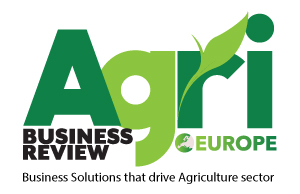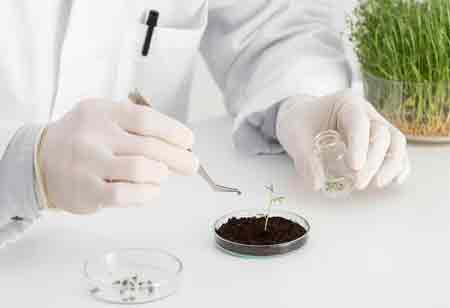Thank you for Subscribing to Agri Business Review Weekly Brief
The Role of Soil Testing in Sustainable Manufacturing
Soil health is crucial for a sustainable economy, influencing corporate strategies, regenerative agriculture, ESG reporting, and advanced monitoring, linking business success with environmental stewardship.

By
Agri Business Review | Tuesday, October 28, 2025
Stay ahead of the industry with exclusive feature stories on the top companies, expert insights and the latest news delivered straight to your inbox. Subscribe today.
In the global push for a more sustainable economy, the ground beneath our feet has emerged as a critical frontier. Once the exclusive domain of agronomists and farmers, soil health has now entered the corporate boardroom, becoming a cornerstone of modern sustainability strategy. The convergence of consumer demand, investor pressure, and a deeper understanding of the profound link between healthy soil, a stable climate, and resilient supply chains drives this seismic shift. Today, industries are looking beyond their factory walls and into the fields, recognising that the foundation of long-term value lies in the very soil from which their raw materials are sourced. This new paradigm is reshaping how manufacturers approach agriculture, how corporations report on their environmental impact, and how to measure the health of the planet.
The Regenerative Revolution.
Manufacturers are shifting from transactional sourcing to collaborative, regenerative agriculture partnerships with their suppliers. This approach is a holistic system of farming principles and practices that seek to rehabilitate and enhance the farm's entire ecosystem. For manufacturers, particularly in the food, beverage, apparel, and wellness sectors, aligning with regenerative principles is becoming a strategic imperative. By championing practices like no-till farming, cover cropping, and multi-species grazing within their supply chains, they are doing more than just burnishing their green credentials. They are future-proofing their own businesses. Healthier soils lead to more resilient crops that are better able to withstand the pressures of a changing climate, such as drought and extreme rainfall, ensuring a more stable and predictable supply of raw materials. Central to this alignment is the pursuit of carbon sequestration goals.
Through photosynthesis, plants absorb carbon dioxide, and when they decompose, a portion of that carbon becomes part of the soil organic matter. Regenerative practices accelerate and enhance this process, turning farms into valuable carbon sinks. For corporations with ambitious net-zero targets, investing in and incentivizing these practices across their agricultural footprint offers a tangible, impactful pathway to achieving their climate objectives. This creates a powerful economic engine that rewards farmers for their role as stewards of the land and a vital part of the global climate solution.
Soil's Role in ESG and Certification
The rise of Environmental, Social, and Governance (ESG) frameworks has created an urgent need for credible, verifiable data to back up corporate sustainability claims. For any company with an agricultural footprint, soil health metrics are becoming the gold standard for robust environmental reporting. The abstract promise of "sustainability" is being replaced by the concrete language of data, and soil provides a rich vocabulary.
Quantitative measurements of Soil Organic Carbon (SOC) are paramount, serving as a direct indicator of carbon sequestration and soil fertility. This single metric provides investors, regulators, and consumers with a precise, scientifically-backed measure of a company's positive climate impact. Beyond carbon, a suite of other soil indicators is crucial for a holistic ESG narrative. Data on nutrient levels, water-holding capacity, and microbial biomass paints a comprehensive picture of an ecosystem's health and resilience. This information demonstrates efficient resource management—showing reduced reliance on synthetic inputs—and showcases efforts to conserve water and enhance biodiversity.
This data-centric approach is also fundamental to the integrity of sustainable farming certifications. Programs that certify products as organic, regenerative, or carbon-neutral rely on stringent verification processes. Soil data provides the empirical evidence needed to validate that specific standards are being met on the ground. It allows tracking improvements over time, demonstrating a genuine commitment to regenerative outcomes rather than a one-time achievement. By integrating verifiable soil data into their ESG reports and certification efforts, companies can build trust, differentiate their products in a crowded marketplace, and attract investment from a growing cohort of sustainability-focused stakeholders. Soil data transforms ESG reporting from a public relations exercise into a rigorous, science-based accounting of environmental stewardship.
The Evolution of Soil Monitoring
As the demand for high-quality soil data has grown, so too has the innovation in the tools used to collect it. A new generation of soil monitoring technologies is emerging, designed not only for accuracy and efficiency but also to embody the very principles of sustainability they are meant to measure. The focus is on minimizing the environmental footprint of the measurement process itself, ensuring that monitoring does not undermine conservation and regeneration goals.
A significant advancement is the development of biodegradable sampling kits. Traditional soil sampling often relies on single-use plastic bags, containers, and tools, creating a stream of plastic waste. The new standard is shifting towards kits made from plant-based polymers and other compostable materials. These tools perform their function effectively in the field and, once their purpose is served, can be composted, breaking down naturally without leaving behind harmful residues. This circular approach ensures that the entire sampling lifecycle aligns with ecological principles.
Simultaneously, the industry is embracing low-impact testing methods that reduce the need for extensive physical sampling and transportation. In-situ sensors, placed directly in the field, can provide continuous, real-time data on key parameters like soil moisture, temperature, and nutrient availability without disturbing the soil structure. On a larger scale, remote sensing technologies, including satellite imagery and drone-based multispectral analysis, enable non-invasive assessment of vast agricultural landscapes. These technologies can infer soil properties and crop health by analyzing how light is reflected off the land, providing invaluable insights with zero physical impact. These innovations are making soil health monitoring more scalable, cost-effective, and environmentally sound, accelerating the virtuous cycle of measurement, management, and verification that underpins the modern sustainable economy.
The growing recognition of soil as a critical asset and climate solution marks a transformative shift within the business landscape. This emerging paradigm integrates regenerative agriculture, ESG reporting, and advanced low-impact monitoring technologies, redefining how industries engage with the natural environment. Increasingly, companies are investing in soil health to strengthen supply chain resilience and advance net-zero commitments by restoring soil organic matter and sequestering carbon. Ultimately, soil health serves as a tangible indicator of corporate environmental performance, aligning long-term business success with the restoration and stewardship of natural capital.





